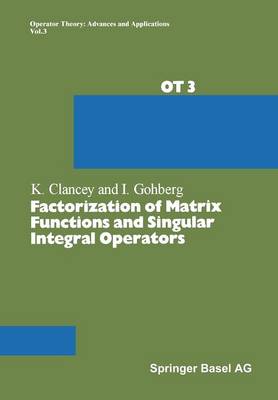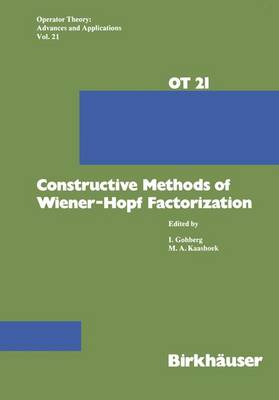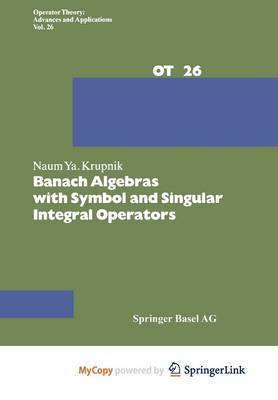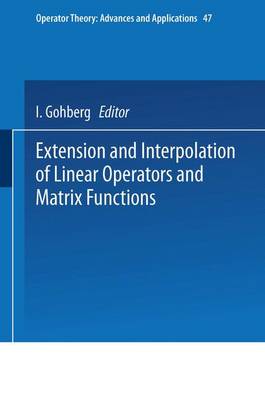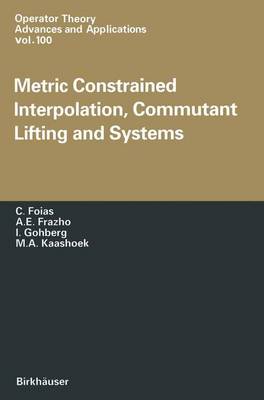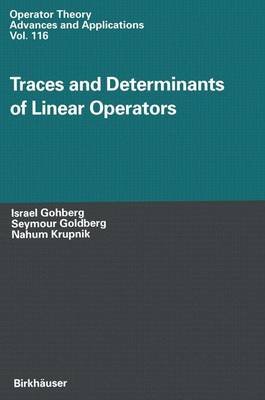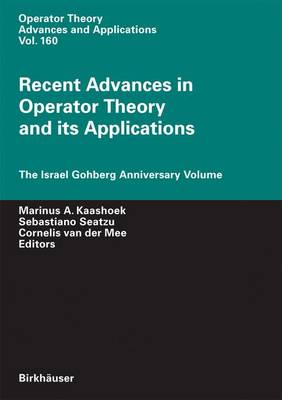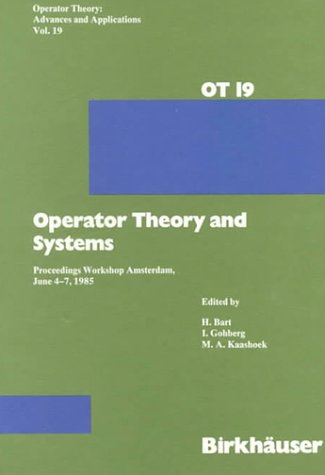Operator Theory: Advances and Applications
12 primary works • 13 total works
Book 3
Factorization of Matrix Functions and Singular Integral Operators
by Prof. Kevin F. Clancey and Prof. Israel Gohberg
Book 21
Constructive Methods of Wiener-Hopf Factorization
by Prof. Israel Gohberg and M. A. Kaashoek
Book 26
Banach Algebras with Symbol and Singular Integral Operators
by Naum Krupnik
This notion plays an essential role not only for systems, but also for singular integral operators with piecewise-continuous (scalar) coefficients [44 (4)]. At the same time, attempts to introduce a (scalar or matrix) symbol for other algebras have failed.
Book 32
Book 38
Book 45
Interpolation of Rational Matrix Functions
by Joseph Ball, I. Gohberg, and Rodman
Book 47
Extension and Interpolation of Linear Operators and Matrix Functions
by I. Gohberg
A more general formulation starts with an admissible matrix valued function X(z) = [a(z) b(z)] which is one with entries a(z) and b(z) which are analytic and bounded in D and in addition are subject to the constraint that, for every n, the n x n matrix with ij entry equal to X(Zi)J X(Zj )* i,j=l, ...
Book 50
Topics in Matrix and Operator Theory
by H. Bart, Prof. Israel Gohberg, and M. A. Kaashoek
Book 100
Metric Constrained Interpolation, Commutant Lifting and Systems
by C Foias, A.E. Frezho, I. Gohberg, and M. A. Kaashoek
Book 116
Traces and Determinants of Linear Operators
by Prof. Israel Gohberg, Seymour Goldberg, and Naum Krupnik
Book 160
Recent Advances in Operator Theory and Its Applications
by I. Gohberg, M. A. Kaashoek, Sebastiano Seatzu, and C. V. M Mee
This book contains a selection of carefully refereed research papers, most of which were presented at the fourteenth International Workshop on Operator Theory and its Applications (IWOTA), held at Cagliari, Italy, from June 24-27, 2003. The papers, many of which have been written by leading experts in the field, concern a wide variety of topics in modern operator theory and applications, with emphasis on differential operators and numerical methods. The book will be of interest to a wide audience of pure and applied mathematicians and engineers.
Book 165
Schur analysis originated with an 1917 article which associated to a function, which is analytic and contractive in the open unit disk, a sequence, finite or infinite, of numbers in the open unit disk, called Schur coefficients, often named reflection coefficients in signal processing. This volume comprises seven essays dedicated to the analysis of Schur and Caratheodory functions and to the solutions of problems for these classes.
v. 19
